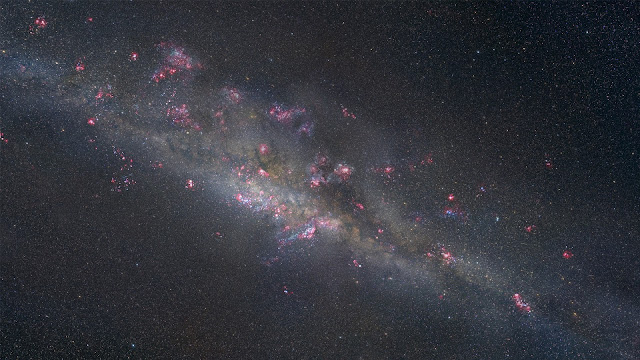This artist’s illustration portrays what the gravitationally lensed galaxy SDSS J1110+6459 might look like up close. A sea of young, blue stars is streaked with dark dust lanes and studded with bright pink patches that mark sites of ongoing star formation. The patches’ signature glow comes from ionized hydrogen, like we see in the Orion Nebula in our own galaxy.
According to new research, these distant star-formation regions are clumpy and span about 200 to 300 light-years. This contradicts earlier theories suggesting that such regions might be much larger, 3000 light-years or more in size.
Image Credit: NASA, ESA, and Z. Levay (STScI)
Explanation from: https://www.spacetelescope.org/images/opo1727c/




No comments:
Add your comment